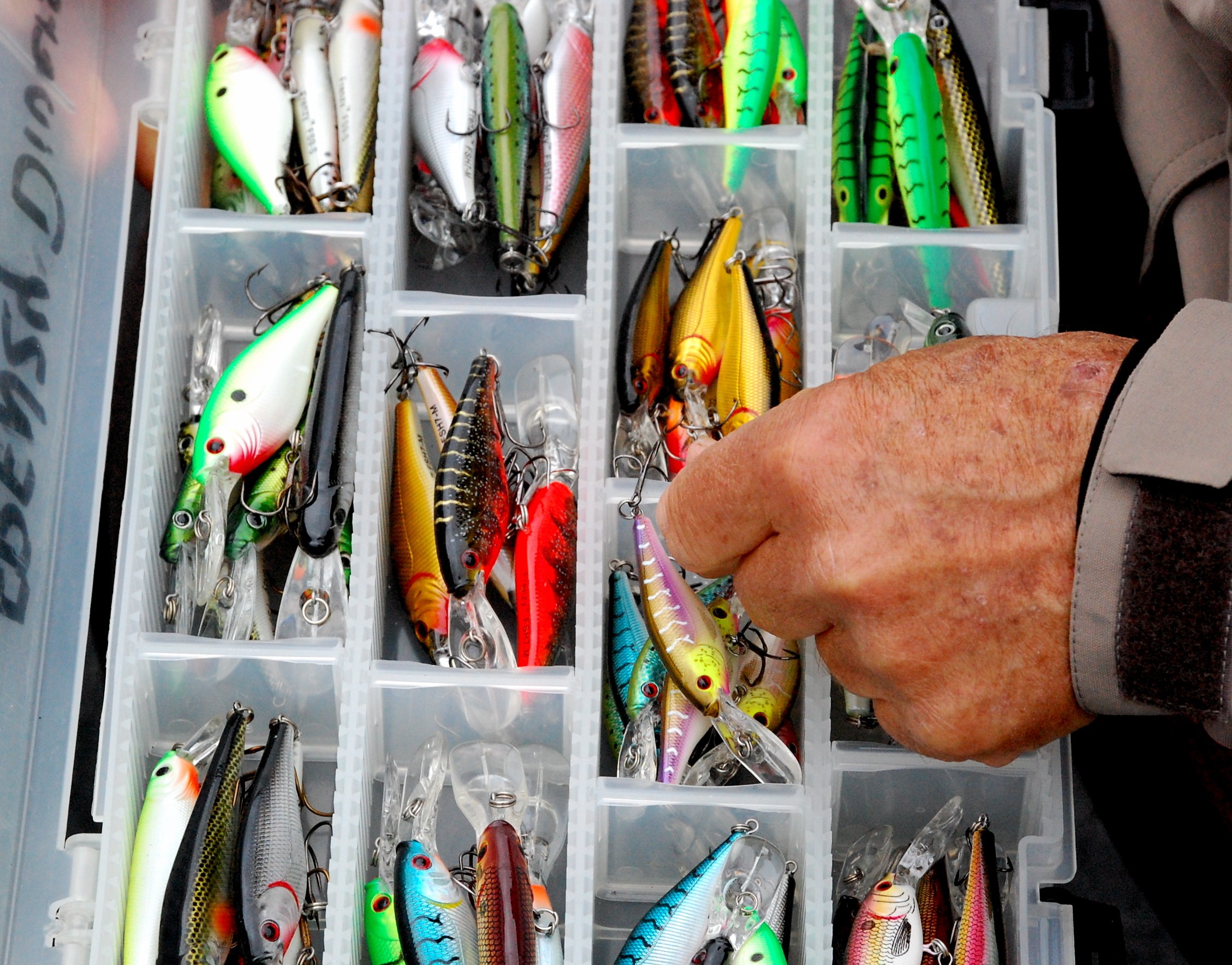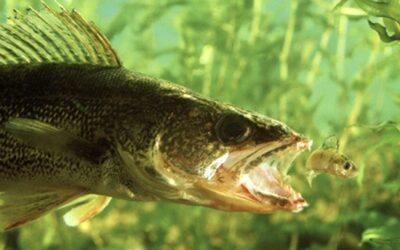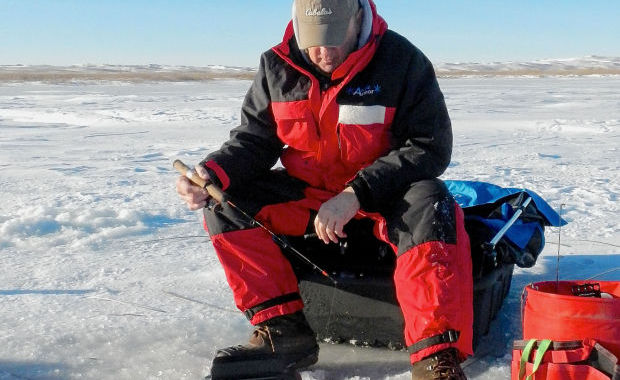It is those dark months of the year, January and February, where nighttime seems long and daylight hours are short. This is the time of the year when I have ice fishing or predator calling on my mind, not so much this year.
The ice fishing has been slow, partly because of the warmer weather had not made thick enough ice and then the freezing temperatures and gusty wind keep me in my office as well as out of the field where I could be calling predators.
When things slow, it is time of the year when I Re-Clean Re-Spool and Re-Place things in my tackle bags.
Once winter set in, and before ice fishing took off, I pulled all of my ice fishing gear out of storage, cleaned out my sled, buckets and tackle bags. I started by throwing away the empty wax worm containers, old line and Styrofoam cups which had collected in my sled. Once these things were discarded, I changed the line on my reels and added some new lures, added new lures, then replaced worn out and rusted hooks on other lures. One thing I have noticed over the years when ice fishing that seems to help me to hook more fish is to replace the treble hooks on lures with single hooks. When a cold-water fish clamps down on a single hook, he does not feel the three hard hooks and spits out your bait. With a single hook the fish will grab your bait, put pressure on your minnow or grub and hold onto it longer, giving you extra time to hook them.
After I finished with that chore, it was time for me to pull out my open water tackle and get it ready for spring fishing.
This week, I started replacing the line on my open water gear, my bottom bouncer, livebait rigging and jigging reels.
Tomorrow, I will tear all the old line off my catfishing rigs, replacing it with the heavier test line required for the size of the cats we hope to catch and the snag-infested waters these big bruisers call home.
Once the cat rods are re-lined, I will start attaching the heavy duty tackle needed to get down to the fish and once there to hook them. The first thing I will add is a heavy no-roll sinker, a pear shaped weight where the line runs through the middle, not affected by current and once on the bottom stays put. I then attach a heavy-duty snap and then a heavy mono leader with either a big circle or Kahle hook. Catfish are famous for rolling when they feel the pressure on the line and the big snap swivel will keep your line from tangling.
The two hooks I mentioned have a pretty good curve in them, which holds more bait and when the cat hits and moves off with your bait, these hook style will embedded themselves in the cats jaw.
I clean up last year’s crud stuck on my rods and reels, especially my catfishing rigs as much of the “stuff” we use to catch them is either stinky or oily, so it may take a chisel and hammer to bust some of that stuff loose.
Then it will be time to start working my way through my tackle, as my catfishing bag looks much like my catfishing reels, a bit slimy and funky. Once I have scraped most of the gunk from my bag, I might try to bribe my wife Cindy into washing them! That may be the toughest thing I have ever attempted and it may be easier to bury them in the dirty clothes hamper and hope she does not notice them and just throws them in with a load. I am afraid the smell from the bags might give it away long before she goes to do the washing.
After I have washed my hands thoroughly, to remove any odor picked up from my catfishing gear, I will start checking over my walleye, bass and panfish tackle.
Over the year, being a line watcher has become more important to me as there are times my line where it enters the water will be the first indication of a bite and will happen long before I feel the pickup. Because my vision is not getting any better, highly visible line allows me to spot any line movement.
All my walleye rods are now re-spooled with brighter Fireline or XL line. When I get ready to attach the business end, my lure on my lure, I will tie about eight foot of Fluorocarbon line to the line. By doing this, my line from the fluorocarbon on up to my rod, the highly visible line allows me to detect bites much quicker, the fluorocarbon attached to it and then to my lure is almost invisible.
Now I have the fluorocarbon leader attached, I am going to look for the perfect bait, one that will drive the fish crazy and just have to clamp down on it.
Then it is time for me to dig into my gear, clean out the lure packages, old line and other garbage, which somehow had ended up in my tackle bags. Next, I will go through my crankbaits, wiping them down and checking the treble hooks to see if they need to be replaced, as some of them had been snagged and when pulled free, the hooks were bent, broken or rusting.
Once I get through the crankbaits. I will wipe off the lures that are dingy, replace damaged hooks, then sort and remove lures, which have not worked well for me. After that, I will add some of the latest and greatest lures, where I will put them in the water, giving them the real test, letting the fish decide if they are ones, which will be on my line much of the time.
I am a firm believer in multi-colored baits or lures, from my jigs, to live bait rigs, spinners and even my crankbaits, all display multicolor, especially florescent colors. Chartreuse and florescent orange combinations are a good starting point, with Firetiger one of my favorite colors for walleyes.
Because I have multiple colors in the water, I am hoping that one of the two or three colors is the one, which will turn the fish on. If I am using one color, the odds are not in my favor as far as picking the one hot color.
In my tackle bag, I will have my most accessible box, the one with my confidence lures, and my go to baits, which have produced year in and out, catching fish when others will not produce.
With everything in order, I will put all my tackle bags, rods and reels in my back room on the loading dock, where they are easily accessible and where no foreign odors will get into my gear and when temperatures start to warm with the water softening up, I will be ready to be on the water.






0 Comments